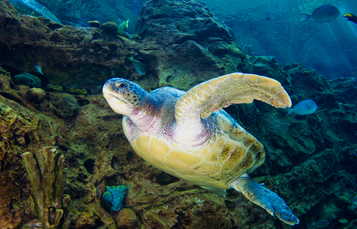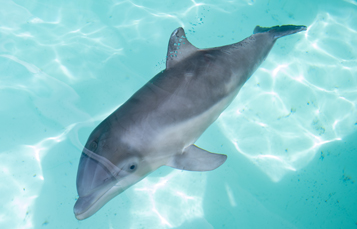One Small Fry For Rising Tide, One Giant Leap For Marine Aquaculture
Right now there are 100 to 150 juvenile yellow tangs, ranging in age from 70 to 90 days old, happily swimming in their tanks - and the best part? There are more are on the way!
Why is that a big deal you ask? Let’s take a step back… Where did all of these yellow tang come from? Until recently they would have been collected from the wild, a practice which, if continued, will threaten the delicate balance of our coral reefs. An alternative to wild collection is to captively breed these species.
Captive breeding has been done successfully for most freshwater fish and many marine corals but the task of breeding marine fish, like the yellow tang, is a bit more challenging. The larvae of this species are microscopic and they eat sub-microscopic copepods and algae. They have a complex lifestyle; thousands of eggs are deposited in the reef and the emerging larvae then drift with currents, eating along the way, for one to three months until they develop a tail and the ability to swim. Fortunately, efforts over the last 20 years have made major changes in the supply of some marine species like clownfish and most recently yellow tang. This breakthrough is thanks to a team of researchers at the Oceanic Institute of Hawaii Pacific University and was made possible in part through the financial support of Rising Tide Conservation, which is dedicated to making breeding and rearing of marine tropical fish economically viable so that there are alternatives to wild collection.
“Most people thought it could not be done,” said Dr. Judy St. Leger, Director of Rising Tide Conservation and Vice President for Research and Science for SeaWorld Parks and Entertainment. “...but Rising Tide Conservation is proud to have supported Dr. Callan and his team at the Oceanic Institute in achieving this milestone.” Chatham Callan, director of the finfish program at the Oceanic Institute (OI) of Hawaii Pacific University, and his team are the first in the world to successfully breed and rear yellow tang, one of the world’s most popular saltwater aquarium fish.
Photo Credit: Aurora Burgess
“We are excited to finally see the results of more than a decade’s work coming to fruition...We look forward to continuing this important work, aimed now at improving the methods necessary to take this to the next level,” Callan said. This success was an important first step for marine aquaculture but we are far from the end of this journey. Next, Callan and his team will work to turn this into a repeatable process with one goal: the ability to produce these, and other marine ornamental fishes, in aquaculture settings as a sustainable alternative to reef collection.
To learn more about the Oceanic Institute or to support its programs visit OceanicInstitute.org or find them on Facebook. Additional information on Rising Tide Conservation may be found at RisingTideConservation.org.
.ashx?version=1_201812111527&h=410&w=660&la=en&hash=B6E32968512FCCE51188E049C725A8DB1B5CAA9F)



.ashx?version=1_202404022246&h=468&w=766&la=en&hash=8DE65BD619660B17C9F60D61E7DCD1D3C7809F39)